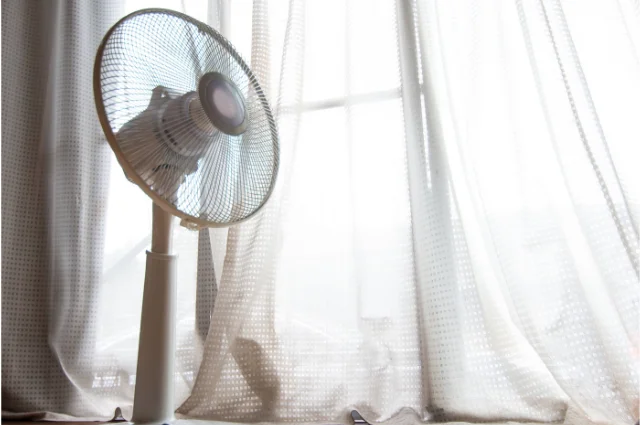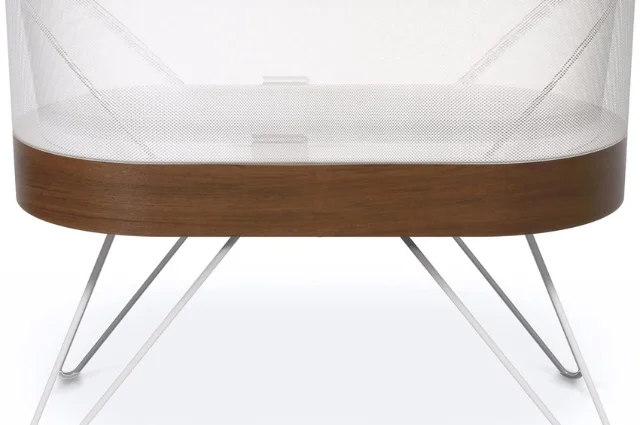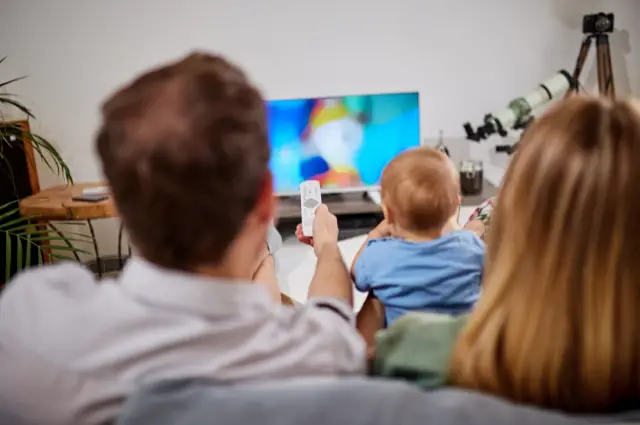Your top priority as a parent is to ensure that nothing will interfere with your little one’s safety or growth. Parents, particularly first-time moms, frequently ask if it’s okay to have a fan blowing on baby while sleeping. This is to ensure that their infant is not at risk of any health hazards as a result of the fan. A fan can help control the temperature in a baby’s room, keeping it cool and cozy for your little one. However, to ensure the baby’s safety, parents must make sure the fan is not pointed in the baby’s direction.
Your baby could become very cold if the air is blown directly on them, which could have adverse effects on their health. Furthermore, the fan’s constant airflow might dry out your baby’s nasal passages, which can cause congestion and breathing difficulties. It can also result in dry skin, which could be uncomfortable for your little one.
In order to prevent this, parents can consider using a humidifier to increase the moisture in the baby’s room. Because of their natural curiosity, babies can readily grab anything that is within their reach or pull on cables. So, it’s crucial to keep the fan out of your little ones reach. If you’ve asked if fan blowing on baby while sleeping is safe, here is what you should know.
Will ceiling fan make newborn sick?
Improved air circulation and more comfort are provided by ceiling fans. However, parents, especially new parents, worry that using a ceiling fan can make their baby sick. Although there is no evidence that using a ceiling fan would make a baby sick, it’s still advisable to use a ceiling fan cautiously and safely when a baby is present. It’s also important to remember that some babies can be more sensitive to the air movement caused by a ceiling fan. So, it could be necessary to lower the fan’s speed or turn it off entirely.
Can we use fan for a 2 month old baby?
Yes, it is safe to use fan for a 2 month old baby as there is no evidence that it is harmful. Although it is safe, it is important to follow the guidelines below.
- Make sure the fan is not too close to your little one because doing so can make them uncomfortable and raise their risk of dehydration.
- It is important to monitor your little one’s body temperature and adjust the fan to suit their temperature
- Ensure that the fan is properly enclosed or taken out of reach for your baby to pull to ensure your baby is safe.
Can a fan take a baby’s breath away?
No, a fan cannot take a baby’s breath away. Fans don’t decrease the air in a room, and they don’t produce a vacuum that may suck the air out of the space. Fans can enhance air quality and circulation, making the atmosphere comfortable for your little one. It is important that your baby shouldn’t be placed in front of the fan directly, and the room shouldn’t be too cold. Babies can sleep safely and comfortably in an environment with regulated room temperature and excellent air circulation.
How to position a fan in a baby’s room
It might be challenging to place a fan in a baby’s room since you want to make sure that your baby is comfortable, at ease, and not in danger of overheating. Firstly, it is important to choose a fan with a grille small enough to avoid little fingers from becoming snagged and one that is steady on a flat surface. In order to circulate air that will help to cool the room without directly blowing on your baby, it is important to aim the fan upward, towards the ceiling. Additionally, make sure the fan is placed at a distance so that your little one cannot reach
Conclusion
To ensure their baby’s safety, parents always wonder if a fan blowing on baby while sleeping is safe. Although using a fan would keep your baby cool in a hot temperature, it is important to prioritize your baby’s health by understanding the guidelines to follow. Highlighted above is everything you need to know when using a fan for your little one. Additionally, it is important to ensure that the fan is placed at a far distance from your baby to avoid any injury.




